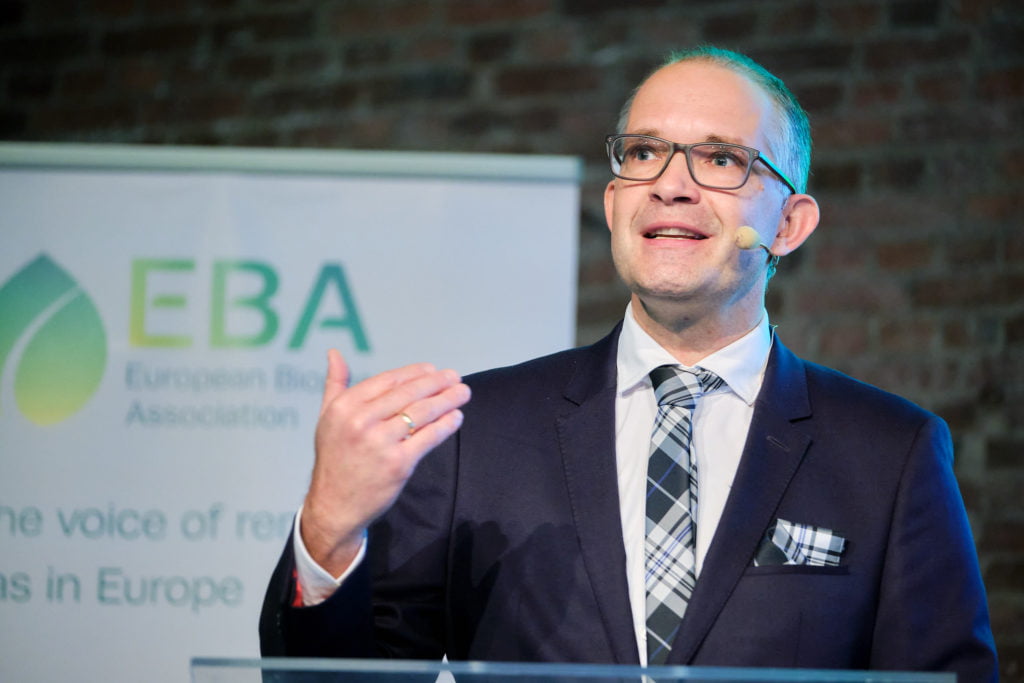Successful European Biogas Conference proves the sector is ready to deliver ‘Fit for 55’ solutions
Opening speech from VP Timmermans’ Cabinet points out the EU need to move away from fossil gas and bring in renewable and low carbon gases.
Biomethane is ready to decabonise our transport, industry and buildings: 30-40 % of our gas needs can be met by biogas/biomethane by 2050.
Increased share of sustainable feedstocks and contribution to the circular bioeconomy on the spotlight in the sessions of this edition.
Brussels 4 November 2021 – The European Biogas Conference 2021 was held last week with great success. Over 200 participants and more than 40 speakers gathered in Brussels on 26 to 27 October the latest developments of renewable gases in Europe. The EU is at the forefront of the low carbon agenda setting the global pace and with the ‘Fit for 55’ package it has provided the regulatory context to move forward. Inspiring interventions and discussions tackled the availability, sustainability and scalability of biogas and its upgraded form, biomethane, in Europe, and how these green gases are making the transition towards a climate-neutral Europe a reality. The conference was also the official launch of the new visual identity of the European Biogas Association, more in line with the current positioning of the sector at the core of our future energy system and with its commitment to shape our circular bioeconomy.
Alexandra Tomczak member of the cabinet of the European Commission Vice-President Frans Timmermans, stressed during the opening the need to “move away from fossil gas and bring in renewable and low carbon gases, such as hydrogen, biogas and biomethane.” and “think about the long-term resilience of the energy system” where “any substitutes for imported fossil gas and more investments in renewable energy will be our strategy to go forward.”
The figures from the EBA Statistical Report, with the 2021 edition foreseen end of this month, are encouraging: there is a massive growth of biomethane from 2019 to 2020 and the future forecasts are equally promising, as highlighted by Harmen Dekker, EBA Director, during his keynote intervention. The combined production of biogas and biomethane could cover today 4.6% of the whole EU gas demand. This is already higher than the overall natural gas consumption in Belgium. By 2050, about 30-40 % of our gas needs can be met by biogas/biomethane. Fostered collaboration and a supportive regulatory framework, will be crucial in ensuring the scale-up of the sector. One of the areas where biomethane can play an important role is transport. The forecasted production of bioLNG for 2024 (liquified biomethane) could fuel more than 25,000 long haul heavy-duty trucks, decreasing emissions from those vehicles below zero levels.
There is no silver bullet for our energy challenges. There is room for different solutions. This conference brilliantly showcased from multiple perspectives on how biogas and biomethane are a solution for the decarbonisation of many sectors (industry, transport, buildings). It also demonstrated how biogas and biomethane are contributing to shape our circular bioeconomy. As summarised by one of the conference speakers, “Waste from 1000 citizens can power biogas for a bus for 1 year and create 1-3 jobs”, delivering renewable energy, clean transport, waste reduction and green employment.
As stressed by Pierre Bascou (Director of ‘Sustainability and income support’, at the European Commission Directorate General for Agriculture) during the opening of the 2nd day of the conference, biogas production contributes to reducing emissions in agriculture, while generating other benefits: “It creates additional income streams for the farming community (…), it delivers heat and electricity in areas not directly connected to national distribution infrastructure, therefore enforcing EU energy security. It also contributes to the deployment of low-value added products of the agriculture and food processing sectors, valorising waste and replacing mineral fertilisers, (…) ensuring there’s no deterioration in soil fertility.”
This edition has also put on the spotlight the use of sustainable and innovative feedstocks for biogas production, including the presentation of a brand new report on the use of sequential cropping or the potential of industrial wastewater. The adequate monitoring and prevention of methane leakages was also discussed in a dedicated session during the conference. This is part of the need to continue fostering innovation and investing on new techniques to strengthen the efficiency and the sustainability of the sector. One of the new applications explored in that framework is the recovery of CO2 from biomethane upgrading.
The European Biogas Conference was also the occasion to recognise outstanding individuals and projects committed with the energy transition and the deployment of a truly circular economy. The winners of the 1st edition of the EBA Awards were announced during the gala dinner: Prodeval (Biogas Cost Reductions Award), Cooperativa Speranza (Biogas Circularity Award), Marie Esteve (Women leading the way to climate-neutrality Award), Emilio Folli (Top Biogas Young Talent Award). Harm Grobrügge, former EBA President who passed away only some weeks ago, was honored with the Biogas Booster award, which will from now on bear his name. Participants had also the opportunity to visit the stands of some of the key stakeholders working on the industry (SHV Energy, bmp greengas, BIOTHANE-VEOLIA, Bayotech, APROVIS, IES Biogas and SeekOps) or explore our LNG truck, ready to run on bioLNG and support the decarbonization of heavy-duty transport in Europe.

















